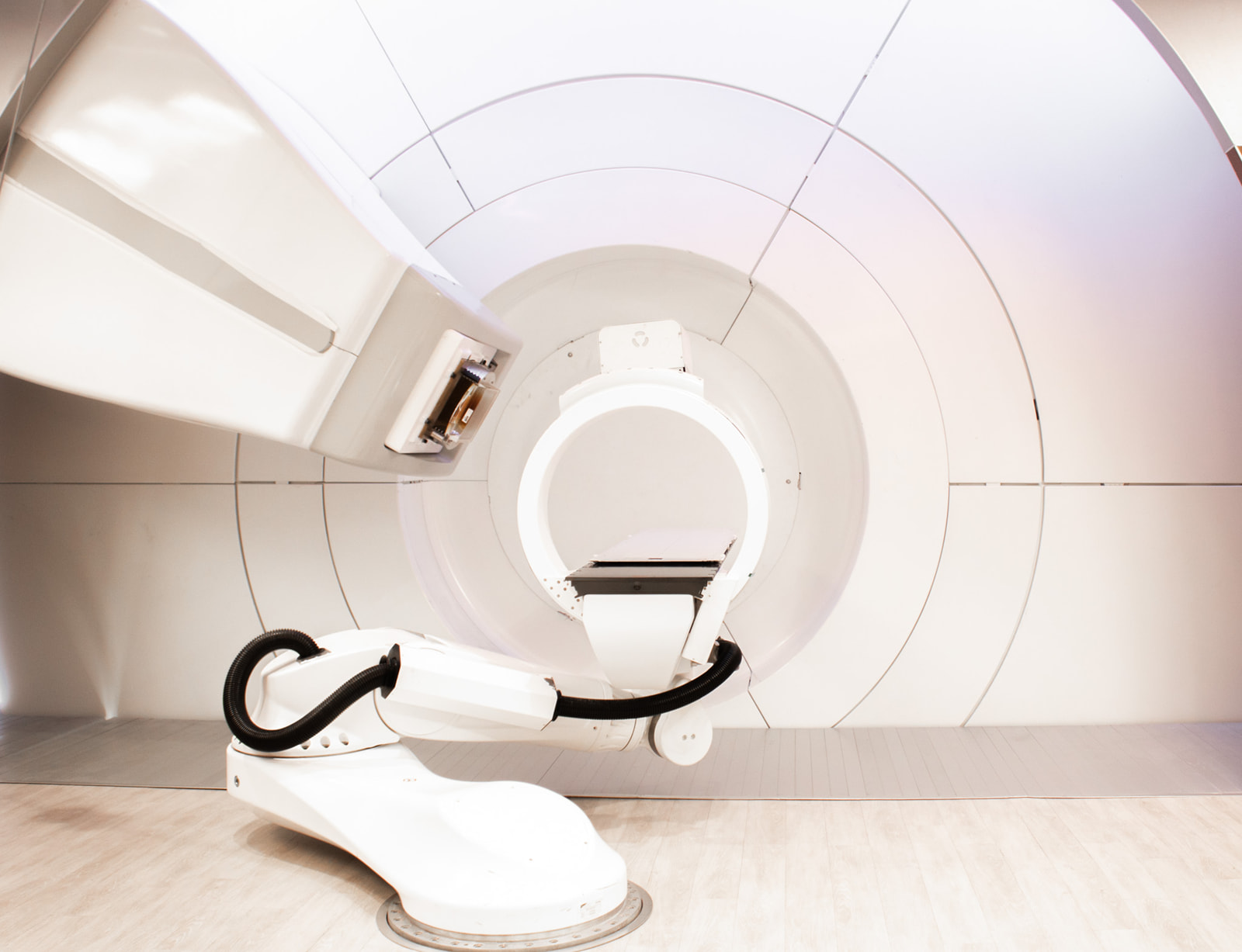Estimated Reading Time: 7 minutes
Key Takeaways
- Precision Treatment: Proton therapy is an advanced form of radiation using proton particles that stop at the tumor site, maximizing dose to the cancer and minimizing it to surrounding healthy tissue.
- Specific Applications: It is particularly beneficial for treating tumors located near critical organs (like the brain, heart, lung, eyes, spinal cord) and for cancers in younger patients where reducing long-term side effects is crucial.
- Ideal Candidates: Patients with complex tumors near sensitive areas or those needing reirradiation may be ideal candidates.
- Evolving Technology: Ongoing advancements like pencil-beam scanning enhance precision, while efforts continue to improve accessibility.
Table of Contents
Introduction
Learning about cancer treatment options can feel overwhelming. If you or a loved one are exploring radiation therapy, you might have heard about proton therapy. So, what is proton therapy? It’s an important question, and understanding the answer can help in making informed decisions about cancer care.
Proton therapy, also known as proton beam therapy, is a very advanced type of radiation treatment. It uses special particles called protons to target and fight cancer cells. What makes it different is its amazing precision. It’s designed to deliver radiation directly to the tumor while reducing the impact on the healthy parts of your body nearby. Proton therapy has become a significant tool in modern oncology, using positively charged proton particles to send focused radiation doses to tumors.
This article aims to give you a clear picture of proton therapy. We will explore the science of proton therapy, how this treatment works, look into the benefits of proton therapy, and discuss who might be a suitable candidate for this advanced form of care. Our goal is to provide a thorough proton therapy guide.
1. Understanding Proton Therapy
What Is Proton Therapy?
Let’s dive deeper into what proton therapy is. It’s a sophisticated kind of radiotherapy, a treatment that uses radiation to kill cancer cells. Instead of using the X-rays (photons) found in traditional radiation therapy, proton therapy uses protons. These are tiny particles with a positive electrical charge. The main advantage comes from how these protons behave when they enter the body.
Proton therapy works because of something called the “Bragg peak phenomenon.” This is a physical property of protons. When a beam of protons travels through the body, it deposits most of its energy at a very specific depth and then stops. Doctors can calculate this depth precisely so that the maximum radiation dose hits the tumor directly. Unlike X-rays, which keep traveling through the body and release energy along their entire path, protons deliver their energy payload right where it’s needed most – inside the cancerous growth. This targeted delivery is key to minimizing radiation exposure to the healthy tissues and organs surrounding the tumor.
This precision makes proton beam therapy a valuable option, especially for certain types of cancer.
Applications of Proton Therapy Explained
Because of its precision, proton therapy is particularly useful in certain situations. It is often considered for treating tumors that are located very close to important, sensitive parts of the body. Damaging these areas could lead to serious side effects, so the accuracy of proton therapy is a major advantage.
Some common applications where proton therapy may be considered include:
- Brain tumors: The brain is surrounded by critical structures, and minimizing radiation exposure is vital.
- Head and neck cancers: These tumors are often near important organs like the eyes, salivary glands, and spinal cord.
- Prostate cancer: Proton therapy can target the prostate while potentially reducing radiation to the nearby bladder and rectum.
- Tumors near vital organs or critical structures: This includes cancers close to the spinal cord, heart, or lungs, where minimizing harm to these organs is crucial.
Clinical research suggests proton therapy is especially beneficial when tumors are situated near critical tissues, as it helps reduce the radiation dose these healthy areas receive. The goal is always to effectively treat the cancer while protecting the patient’s overall health and quality of life.
2. How Does Proton Therapy Work?
Mechanism of Proton Beam Therapy
Understanding how proton therapy works involves looking at some impressive technology. The process starts with generating protons and getting them ready for treatment. This usually happens in a large machine called a particle accelerator, often a cyclotron or a synchrotron. The Tennessee Oncology Proton Center uses a cyclotron. These machines use powerful magnetic and electric fields to speed up protons to very high energies, sometimes close to two-thirds the speed of light.
Once the protons reach the required energy level, they are guided out of the accelerator through a system of magnets called a beamline. This beamline directs the protons towards the treatment room. Inside the treatment room, sophisticated equipment, often including a large rotating structure called a gantry, aims the proton beam at the patient’s tumor from various angles. This ensures comprehensive coverage of the cancerous area.
The key is the controlled release of energy – the Bragg peak. Medical physicists and doctors carefully calculate the exact energy needed for the protons to stop precisely within the tumor. As the protons slow down at this specific depth, they release their maximum cancer-fighting energy. Very little radiation dose is deposited in the healthy tissues before the tumor, and almost none is deposited beyond the tumor.
To make this happen accurately every single time, proton beam therapy relies heavily on advanced imaging and computer software. Before treatment, detailed scans like CT, MRI, or PET scans create a 3D map of the tumor and surrounding structures. Specialized software uses this map to plan the treatment, calculating the exact path, shape, and intensity of the proton beam needed. During treatment, imaging systems help position the patient correctly and sometimes even track tumor movement, ensuring the beam stays precisely on target. This combination of particle physics and cutting-edge technology allows for highly conformal radiation therapy, meaning the radiation dose matches the shape of the tumor very closely.
3. Benefits of Proton Therapy
The unique way protons deliver energy provides several potential advantages for patients undergoing cancer treatment. These benefits of proton therapy often center around its precision and ability to spare healthy tissue.
Precision in Targeting Tumors
One of the primary benefits of proton therapy is its exceptional accuracy. Because protons deposit the bulk of their energy directly within the tumor and stop, doctors can deliver a high dose of radiation to the cancer cells while significantly reducing the dose received by surrounding healthy tissues and organs. Think of it like painting inside the lines with extreme care.
This precision is made possible by meticulously controlling the energy of the proton beam. By adjusting the speed of the protons, clinicians can fine-tune the depth at which the Bragg peak occurs, ensuring it coincides with the tumor’s location. Advanced delivery techniques, like pencil-beam scanning, further enhance this accuracy by “painting” the tumor layer by layer with a very narrow proton beam. The Tennessee Oncology Proton Center uses pencil beam scanning in a state of the art SC360 gantry system. This ability to conform the radiation dose tightly to the tumor’s boundaries is crucial.
Effectiveness in Treating Various Cancers
Proton therapy is an effective tool for treating a range of cancers, particularly those that are challenging to manage with conventional methods due to their location. Its ability to deliver highly targeted radiation makes it suitable for complex cases where sparing nearby critical structures is paramount.
Research continues to explore the effectiveness of proton therapy across different cancer types. Clinical studies compare proton therapy with traditional radiation to better understand its specific advantages in various scenarios. While it’s a powerful option, the decision to use proton therapy depends on many factors, including the type and location of the cancer, the patient’s overall health, and treatment goals. The goal is to use this advanced technology where it offers the most significant benefit in effectively treating the cancer while minimizing harm. See more on treatment effectiveness.
4. Who Can Benefit from Proton Therapy?
While proton therapy offers significant advantages, it may not be the best choice for every patient or every type of cancer. Determining suitability involves careful consideration of the specific cancer diagnosis, tumor location, and individual patient factors. Let’s look at who might be considered ideal candidates and other important considerations.
Ideal Candidates
The precision of proton therapy makes it particularly advantageous for certain groups of patients. Generally, individuals who might experience the greatest benefits of proton therapy include:
- Patients with tumors located near critical organs or sensitive structures: This is perhaps the most common reason for choosing proton therapy. Cancers in the brain, spinal cord, head and neck region, prostate, near the heart, or eyes often require radiation therapy that carefully avoids damaging these vital areas. Proton therapy’s ability to stop the radiation beam at the tumor edge helps protect these structures.
- Individuals needing reirradiation: Sometimes, cancer returns in an area that has already received radiation therapy. Delivering more traditional radiation can be risky due to the cumulative dose to healthy tissues. Proton therapy, by limiting the dose to surrounding areas, might offer a safer way to retreat these recurrent cancers.
Ultimately, the decision is made on a case-by-case basis after a thorough evaluation by a radiation oncology team specializing in proton therapy. They will review the patient’s medical history, imaging scans, and specific cancer details to determine if the potential benefits outweigh other factors.
Age and Health Considerations
While age itself isn’t always the deciding factor, overall patient health is important. The potential to reduce radiation exposure to healthy tissues is a significant consideration for all age groups, especially concerning potential long-term side effects.
Patients with certain pre-existing health conditions might also be considered good candidates. If someone has conditions that make their organs more sensitive to radiation damage, the precision of proton therapy could be particularly valuable. By minimizing collateral radiation dose, it might help reduce the risk of worsening existing health problems or developing new ones related to treatment.
The reduced radiation exposure inherent in proton therapy is a key factor in minimizing potential long-term risks associated with cancer treatment. Protecting healthy tissues today can contribute to better health outcomes and quality of life years down the road. As always, a detailed discussion with the oncology team is necessary to weigh these considerations for each individual.
5. Future of Proton Therapy
Proton therapy is already an advanced treatment, but the technology and its applications continue to evolve. Researchers and engineers are constantly working to make proton therapy even more precise, effective, and accessible to patients who could benefit from it.
Advancements in Technology
Innovation is driving improvements in how proton beam therapy is delivered. One significant advancement is pencil-beam scanning (PBS), also known as intensity-modulated proton therapy (IMPT). Unlike older techniques that used physical devices to shape the beam, PBS uses powerful magnets to steer a very narrow proton beam—like a pencil point—across the tumor, layer by layer. This allows for incredibly detailed shaping of the radiation dose to conform precisely to complex tumor shapes, further sparing healthy tissue.
Another area of development is real-time imaging and adaptation. Tumors can sometimes move slightly during treatment due to breathing or other bodily functions. Researchers are integrating advanced imaging techniques directly into the treatment process. This allows clinicians to see the tumor’s position in real-time and make immediate adjustments to the proton beam’s trajectory, ensuring the radiation stays accurately targeted throughout the treatment session. These technological strides continuously refine the precision and effectiveness of proton therapy.
Expanding Accessibility
One of the historical challenges with proton therapy has been its cost and limited availability. Proton therapy centers require large, complex, and expensive equipment, including particle accelerators and beam delivery systems. However, efforts are underway to make this treatment more accessible. Proton therapy explained in terms of accessibility involves several factors.
Firstly, more proton therapy centers are being built around the world. As the technology matures and its benefits become more widely recognized through clinical research, the number of facilities offering this treatment is growing, bringing it closer to more patients.
Secondly, research and development are focused on reducing the cost and footprint of proton therapy systems. Innovations in accelerator design and beam delivery technology aim to make future proton therapy centers smaller, more efficient, and less expensive to build and operate. This could significantly improve affordability and availability.
Finally, insurance coverage is a critical aspect of accessibility. As more high-quality clinical trials demonstrate the benefits of proton therapy for specific cancer types, especially regarding reduced side effects and improved long-term outcomes, it is anticipated that insurance coverage may become broader, making the treatment financially viable for more patients. Continued research validating its effectiveness and cost-effectiveness is key to wider adoption and coverage.
6. Conclusion
So, what is proton therapy? As we’ve explored, it’s a highly advanced and precise form of radiation therapy that uses proton particles to target cancerous tumors. Its key characteristic, the Bragg peak, allows it to deliver a powerful dose of radiation directly to the tumor while minimizing exposure to surrounding healthy tissues.
The primary benefits of proton therapy stem from this precision, potentially leading to less severe side effects, especially for tumors located near critical organs. While it represents a significant step forward in cancer treatment technology, the decision to use proton therapy is complex and depends on individual circumstances.
Understanding the options available is an important part of the cancer journey. If you believe proton therapy might be relevant to your situation, the most crucial step is to discuss it with your oncology team. They can provide personalized information based on your specific diagnosis and health profile, helping you understand if this advanced treatment is the right choice for you.
7. Reach Out
Stay informed about the latest developments in cancer care and treatment technologies like proton therapy by subscribing to our blog. We provide regular updates and insights into advanced medical options.
If you or a loved one are exploring treatment options and think proton therapy might be suitable, we encourage you to reach out to our team. A consultation with experienced radiation oncologists can provide tailored advice and help determine the best course of action for your unique needs.





